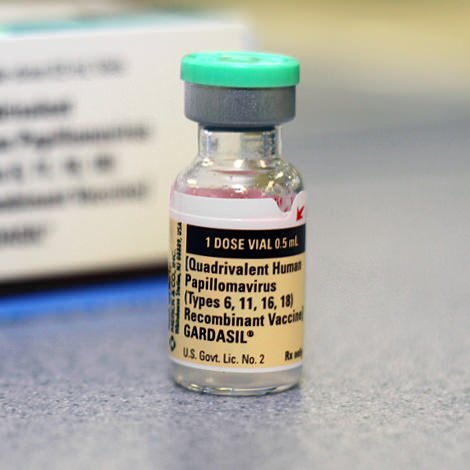
Sexually transmitted diseases can vary from simply irritating to life-threatening. Women need to understand and recognize various STD symptoms in women and respond appropriately to the symptoms to ensure that a disease that could be easily taken care of does not grow into a monumental problem. Here are six sexually transmitted diseases women experience and their accompanying STD symptoms in women.
Chlamydia – This particular disease is most common in younger women ages 15-24. It is the most frequently reported and fastest growing STD in the United States. Unfortunately due to the symptoms it is also a STD that many women neglect to report to their doctors.
Symptoms will occur approximate 1-3 weeks after exposure and consist of burning during urination, spotting during periods and vaginal discharge out of the norm. Chlamydia can be transmitted from anal, oral and vaginal sex and unfortunately could be passed from a mother to a child during a pregnancy resulting in vaginal birth.
This is a STD that can easily be treated with antibiotics, but left untreated can do severe damage. If Chlamydia spreads into the fallopian tubes or the uterus pelvic inflammatory disease could occur. PID could cause permanent damage to the fallopian tubes and uterus when not treated, resulting in chronic pelvic pain, potential of fatal ectopic pregnancy or the chance of the woman becoming infertile. Fatal ectopic pregnancy is a birth outside the uterus.
Genital herpes – The horrible thing about this particular STD is when a woman contracts the virus it permanently stays in the system. Patients generally contract this disease within a couple of weeks of transmission.
There are many different STD symptoms in women regarding genital herpes. These symptoms include blisters or open sores near or on the vagina along with vaginal discharge, burning, itching or swollen glands in the genital area, fever, headaches, muscle aches, pain during urination and small red bumps. These STD symptoms in women can generally be relieved after a couple of weeks. However, it is important for any woman that contracts genital herpes to understand the disease can return even after being treated.
Herpes transmission occurs during sex, particularly if the woman had any cold sores. There is no actual cure for the disease but the right type of drugs can decrease the amount of pain and suffering from the disease.
Genital warts and HPV – Approximately 50% of sexually active people will contract genital HPV during their lives. Sometimes there are no STD symptoms in women that allow this disease to be diagnosed. Other times symptoms such as lesions on the cervix or in the vagina and warts in the genital area and inner thighs appear.
The warts can appear years after contact with an infected person. Genital HPV can be transmitted through all forms of sex or direct skin-to-skin contact with an infected individual in the genital area. There is no treatment for HPV although infection usually resolves itself on its own after a spell.
A number of strains of this virus pose no major health consequences. However, some strains have been known to increase the risk of cervical cancer.
Gonorrhea – This disease is just behind Chlamydia for most reported STD. The mild STD symptoms in women regarding gonorrhea are often confused with bladder infections. These symptoms include abdominal pain, extreme menstrual flow, pain or burning when urinating, spotting between each period and vaginal discharge that is either yellow or bloody. If the symptoms do appear that usually happens in approximately ten days.
Transmission is the same as with Chlamydia, including the possibility of transmitting the disease to a child just being born. Gonorrhea can be treated with antibiotics. However, if a woman waited to have this disease treated there could be permanent damage to the body. The consequences of untreated gonorrhea are the same as Chlamydia with joint and heart tissue damage additional consequences. More important, the risk of contracting AIDS becomes greater if gonorrhea is not treated in a timely manner.
Trichomoniasis – STD symptoms in women for trichomoniasis include discomfort while urinating, gray, green or yellow vaginal discharge that possesses a strong smell, intercourse with some level of pain and an irritated genital area. Transmission of trichomoniasis occurs due to a parasite that is passed during sex or genital contact with damp objects such as wet clothing. This parasite can live outside the body for nearly ¾ of an hour.
Fortunately this STD can be treated with different types of prescription drugs. However, trichomoniasis that goes untreated can cause an increase in contracting the HIV virus. Women that have this disease when pregnant put the baby in a precarious situation since the disease can cause a baby to be born early or weigh less than 5 ½ pounds when born.
These first five diseases can be quite troublesome. However, each disease is manageable. The problem arises when one of these sexually transmitted diseases is not treated. HIV frightens everybody and contracting this deadly disease is possible as a result of some of these other diseases.
HIV – This disease is transmitted through sexual intercourse, a blood transfusion with infected blood and sharing needles with another person that has been infected. Some of the STD symptoms in women that could indicate HIV include brown, purplish or red blotches on the skin or inside the mouth, nose, or eyelids, coughing, diarrhea, extreme tiredness, fever, infections that last for long periods of time, menstrual cycle changes, night sweats, oral and vaginal yeast infections, PID, swollen glands and weight loss at a rapid rate.
The frightening thing about HIV is the STD symptoms in woman can lay dormant for as many as ten years. There is no known cure for HIV although some drugs are on the market that can slow the progress of the disease. HIV can weaken the body’s immunity system and lead to the onset of AIDS.
STD symptoms in women should not be taken lightly. Any woman that believes her sexual activity may have led to contracting a STD should consult her physician immediately.



Be the first to comment